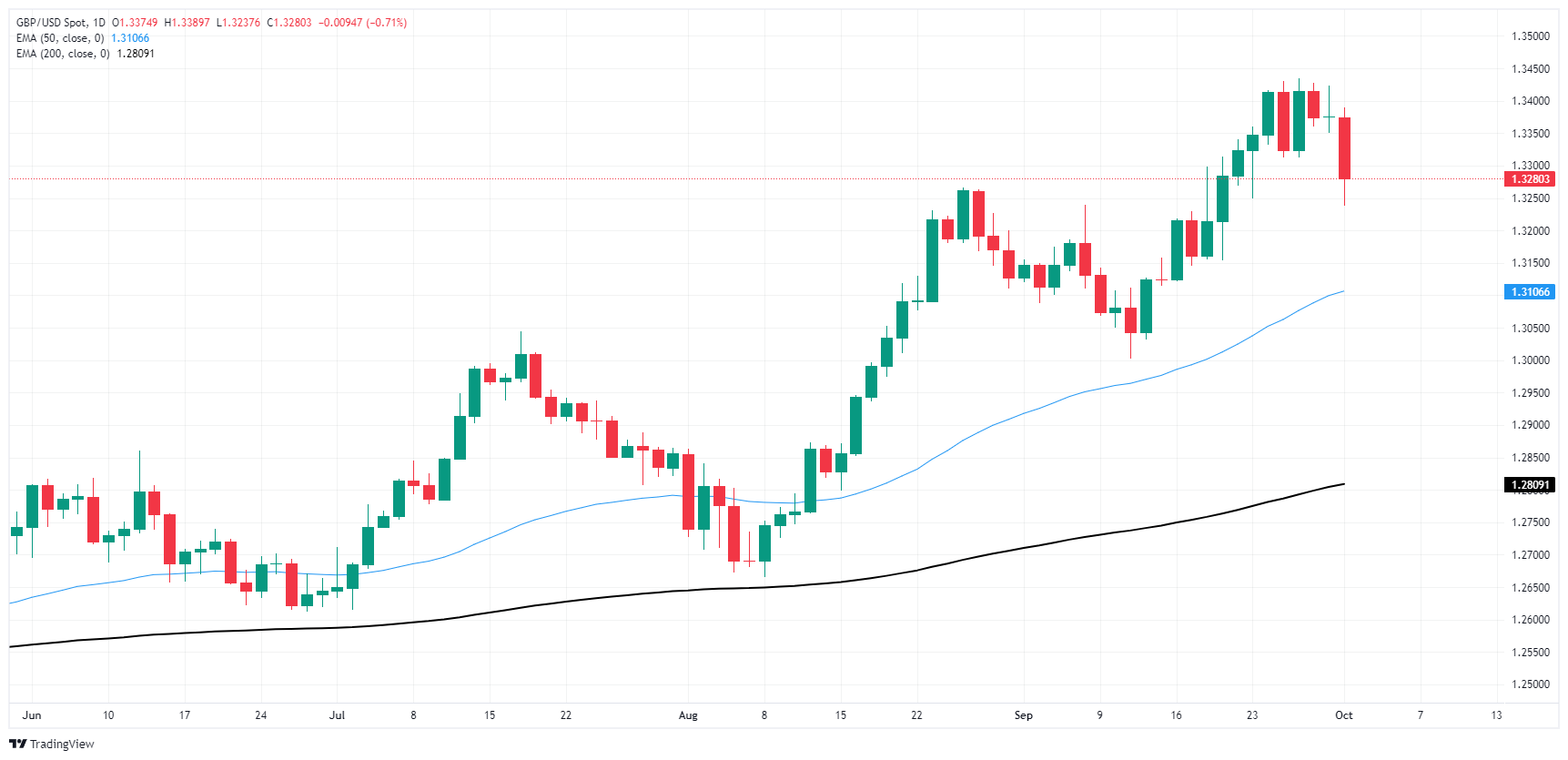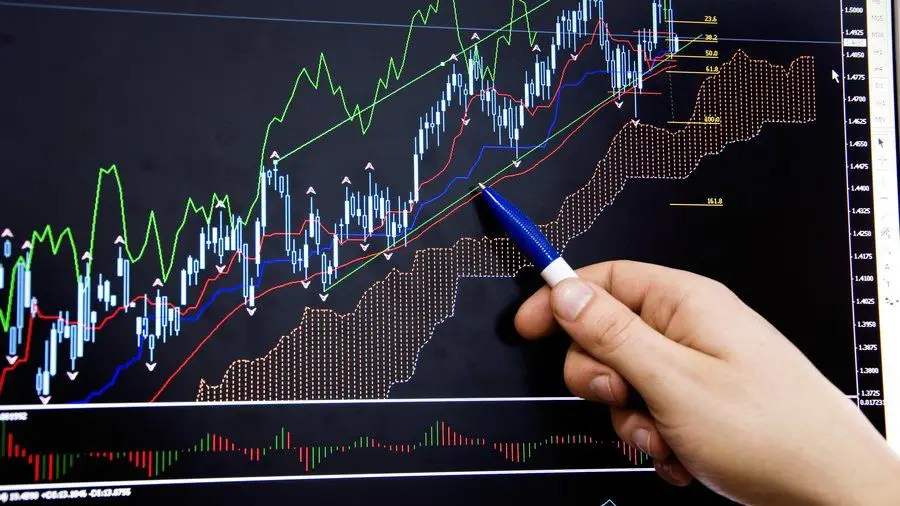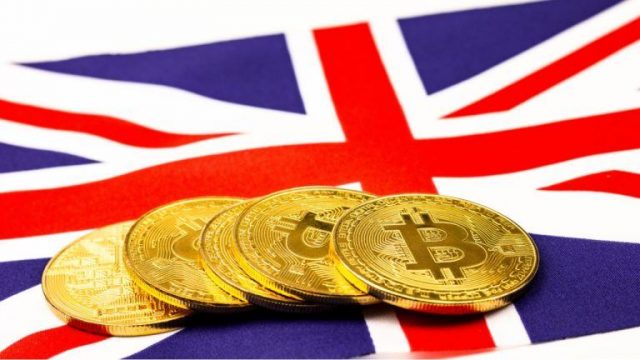- GBP/USD fell below 1.3300 on Tuesday as risk aversion flows increase.
- Reports of Iranian missile attacks on Israel have raised fears of additional geopolitical conflict.
- US data ahead of Friday’s Nonfarm Payrolls (NFP) report did little to inspire investor confidence.
GBP/USD suffered a drop on Tuesday, retreating to its lowest bids in more than a week after US ISM Purchasing Managers’ Index (PMI) figures failed to meet forecasts. Geopolitical tensions took center stage during the US market session, further dampening risk appetite following reports that Iran has fired on Israel in a clear escalation of tensions in the Middle East.
The economic calendar remains relatively free and clear on the Sterling side, with GBP traders forced to wait until the Bank of England’s (BoE) Monetary Policy Report Hearings, scheduled for early Thursday. On the US side, a trickle of collectively significant but individually insignificant economic data fills the picture in the lead up to Friday’s Nonfarm Payrolls (NFP), and investors are grappling with lackluster releases that routinely fail to deliver. the expectations.
Forex Today: US labor market will be in the spotlight along with Fed members
The US ISM Manufacturing PMI for September remained stubbornly at 47.2 for the second consecutive month, missing the expected rise to 47.5. ISM manufacturing paid prices also retreated more than expected during the same period, falling into contraction territory to 48.3, from the previous 54.0.
Looking further into the US data, JOLTS job openings in August rose to 8.04 million, up from the revised 7.7 million in the previous period. Still, the expansion in listed job openings may not translate directly into new hiring after the ISM manufacturing employment index for September fell to 43.9 from the previous 46.0, missing the expected rise to 47.0.
Investor attention has been completely focused on geopolitical tensions in the Middle East after early reports that Iran has executed a first salvo of missiles against Israel in response to Israel’s recent invasion of Lebanon. The US has declared it will retaliate on Israel’s behalf, and investors are balking at the prospect of a rapid escalation of the ongoing conflict.
GBP/USD Price Forecast
Cable’s pullback on Tuesday has dragged the pair below the 1.3300 area. Price action is now set for a downside extension back to the 50-day EMA near 1.3100. However, the path is far from smooth for an extended bearish push towards the previous low just north of 1.3000.
GBP/USD Daily Chart
The British Pound FAQs
The British Pound (GBP) is the oldest currency in the world (886 AD) and the official currency of the United Kingdom. It is the fourth most traded currency unit in the world, with 12% of all transactions and an average of $630 billion per day, according to 2022 data.
Its key currency pairs are GBP/USD, also known as “Cable”, which represents 11% of the forex market, GBP/JPY, or the “Dragon” as it is known to traders (3%), and EUR/GBP (2%). The pound sterling is issued by the Bank of England (BoE).
The most important factor influencing the value of the Pound Sterling is the monetary policy decided by the Bank of England. The Bank of England bases its decisions on achieving its main objective of “price stability”, that is, a stable inflation rate of around 2%. Its main tool to achieve this is the adjustment of interest rates.
When inflation is too high, the Bank of England tries to contain it by raising interest rates, which makes access to credit more expensive for individuals and companies. This tends to be positive for the GBP, as higher interest rates make the UK a more attractive place for global investors to park their money.
When inflation is too low, it is a sign that economic growth is slowing. In this scenario, the BoE will consider lowering interest rates to make credit cheaper, so that companies borrow more to invest in projects that generate growth.
The published data gauges the health of the economy and may influence the value of the Pound sterling. Indicators such as GDP, manufacturing and services PMIs, and employment can influence the direction of the Pound.
A strong economy is good for the British pound. Not only does it attract more foreign investment, but it may encourage the Bank of England to raise interest rates, which will directly strengthen the Pound. Otherwise, if economic data is weak, the pound is likely to fall.
Another significant data for the pound sterling is the trade balance. This indicator measures the difference between what a country earns from its exports and what it spends on imports during a given period.
If a country produces highly sought-after exports, its currency will benefit exclusively from the additional demand created by foreign buyers wishing to purchase these goods. Therefore, a positive net trade balance strengthens a currency and vice versa for a negative balance.
Source: Fx Street
I am Joshua Winder, a senior-level journalist and editor at World Stock Market. I specialize in covering news related to the stock market and economic trends. With more than 8 years of experience in this field, I have become an expert in financial reporting.







